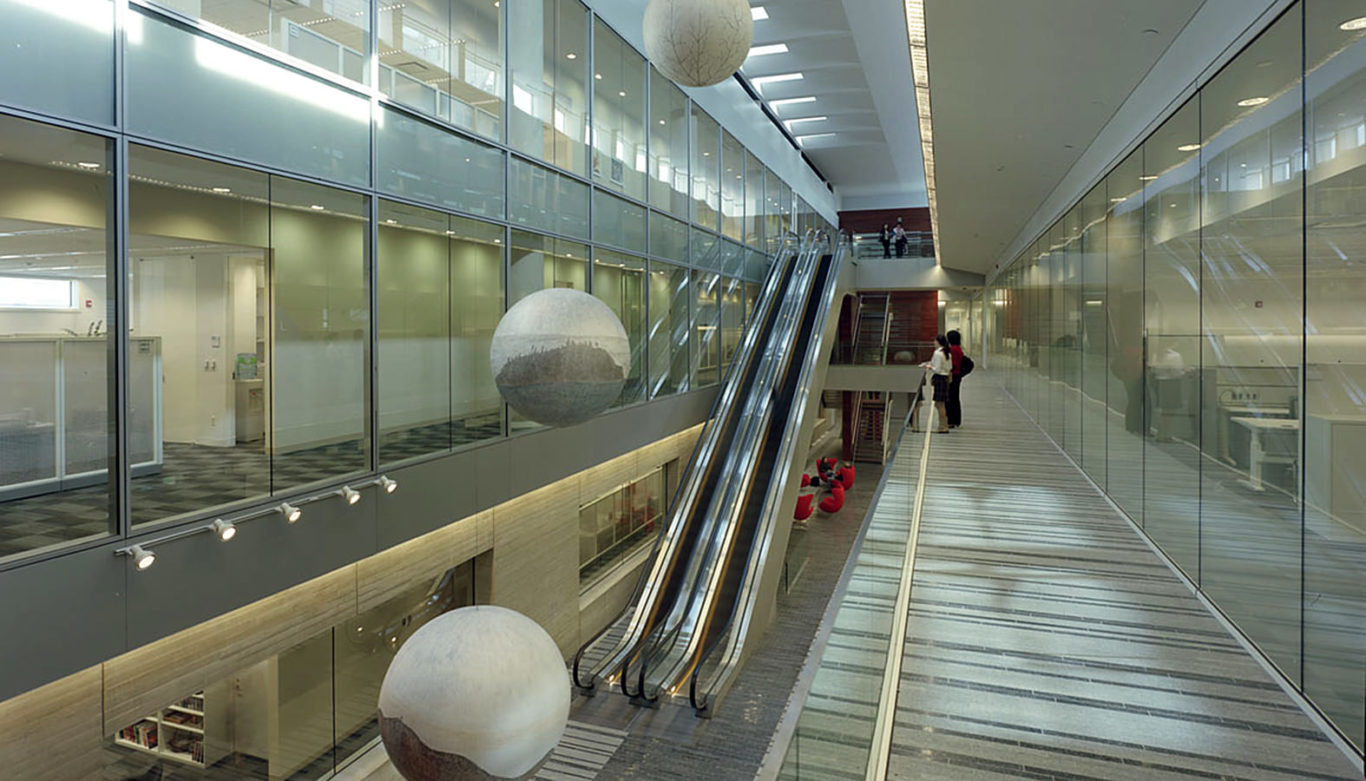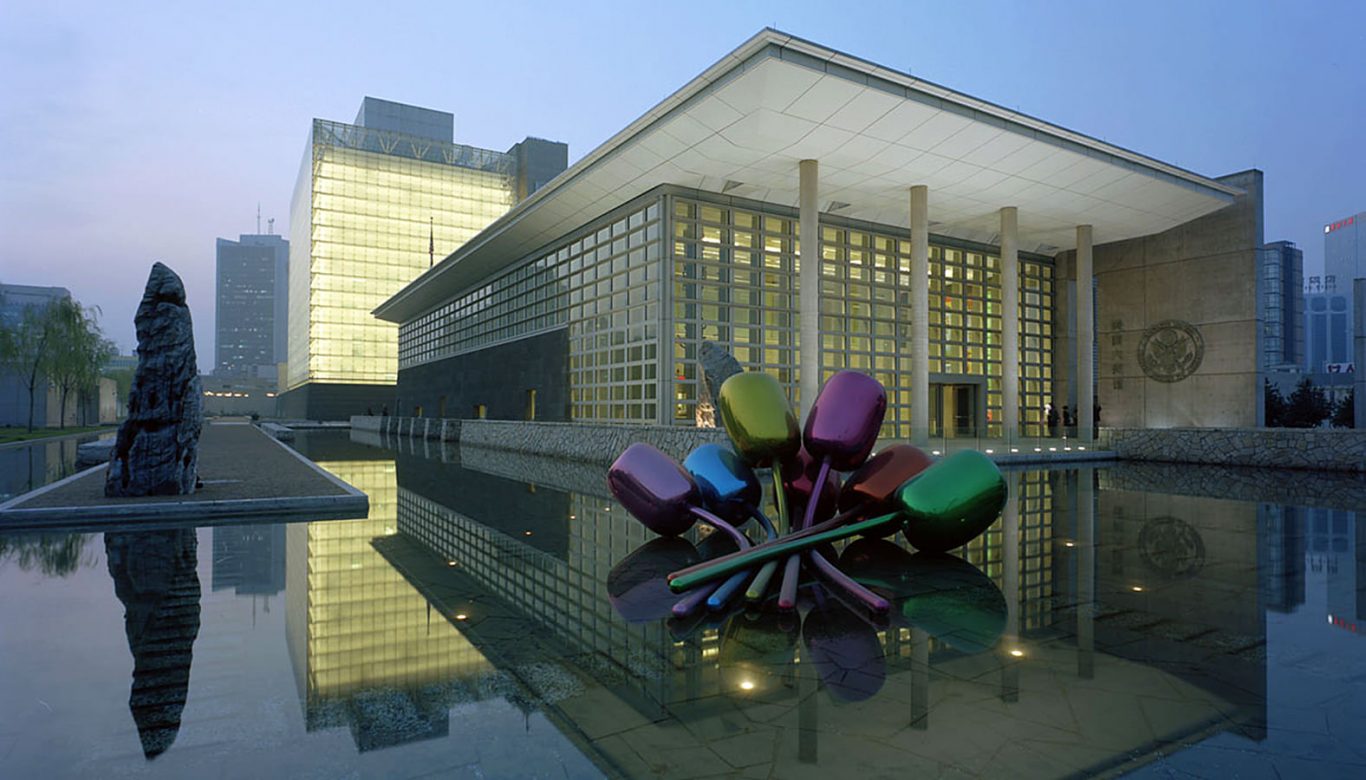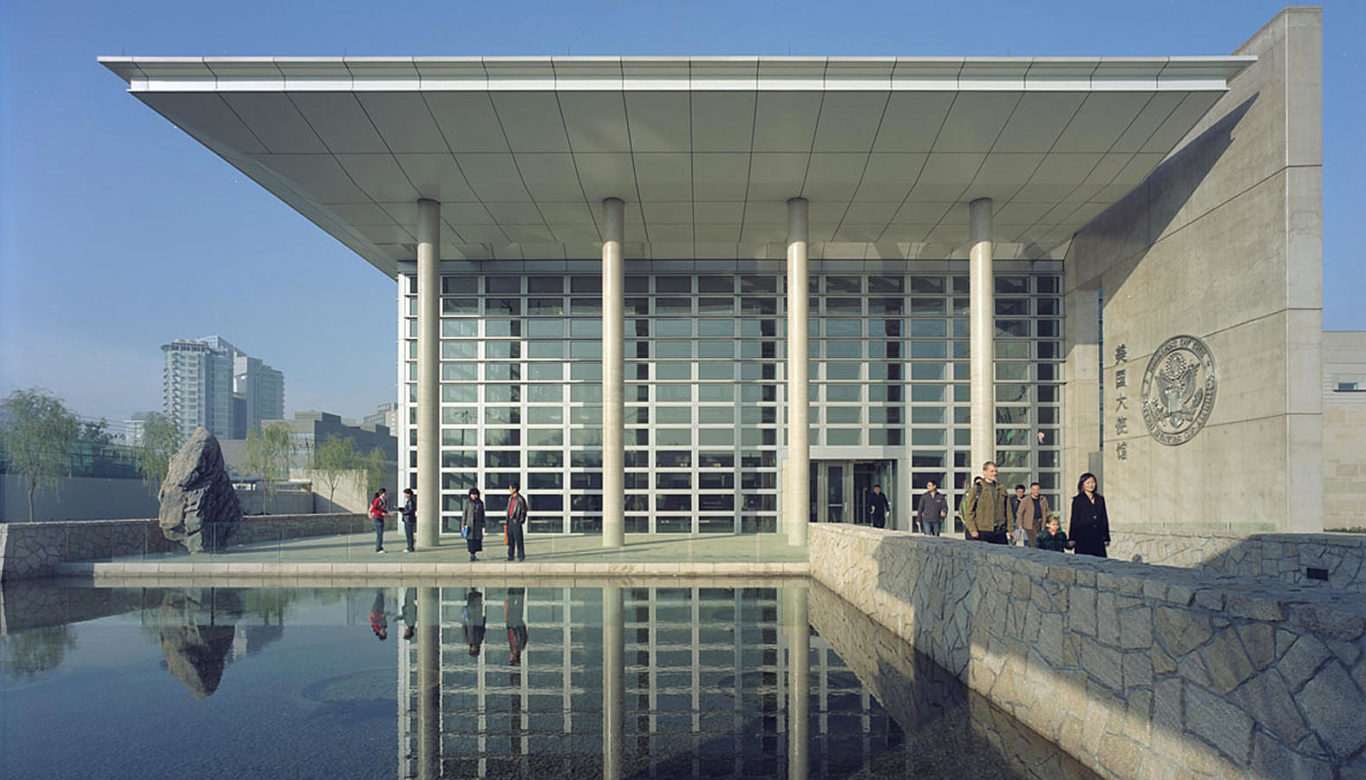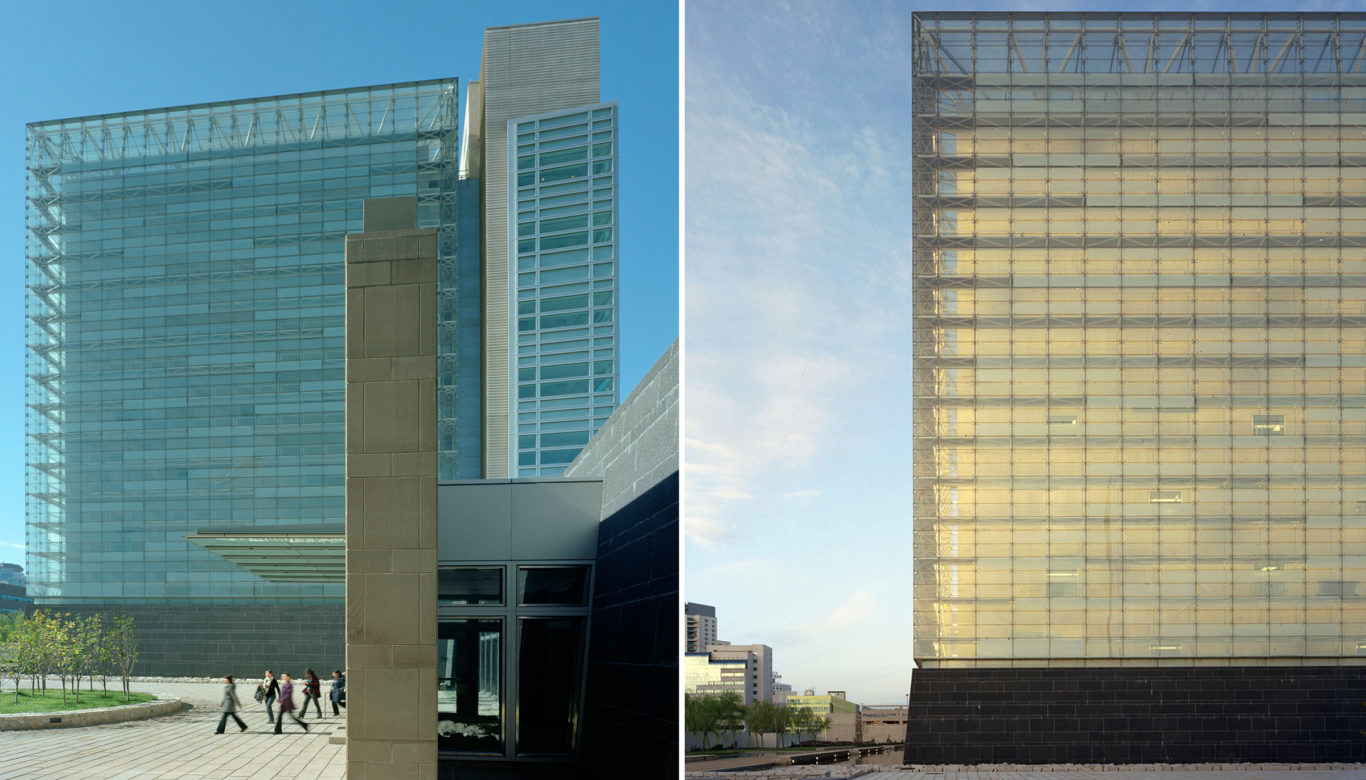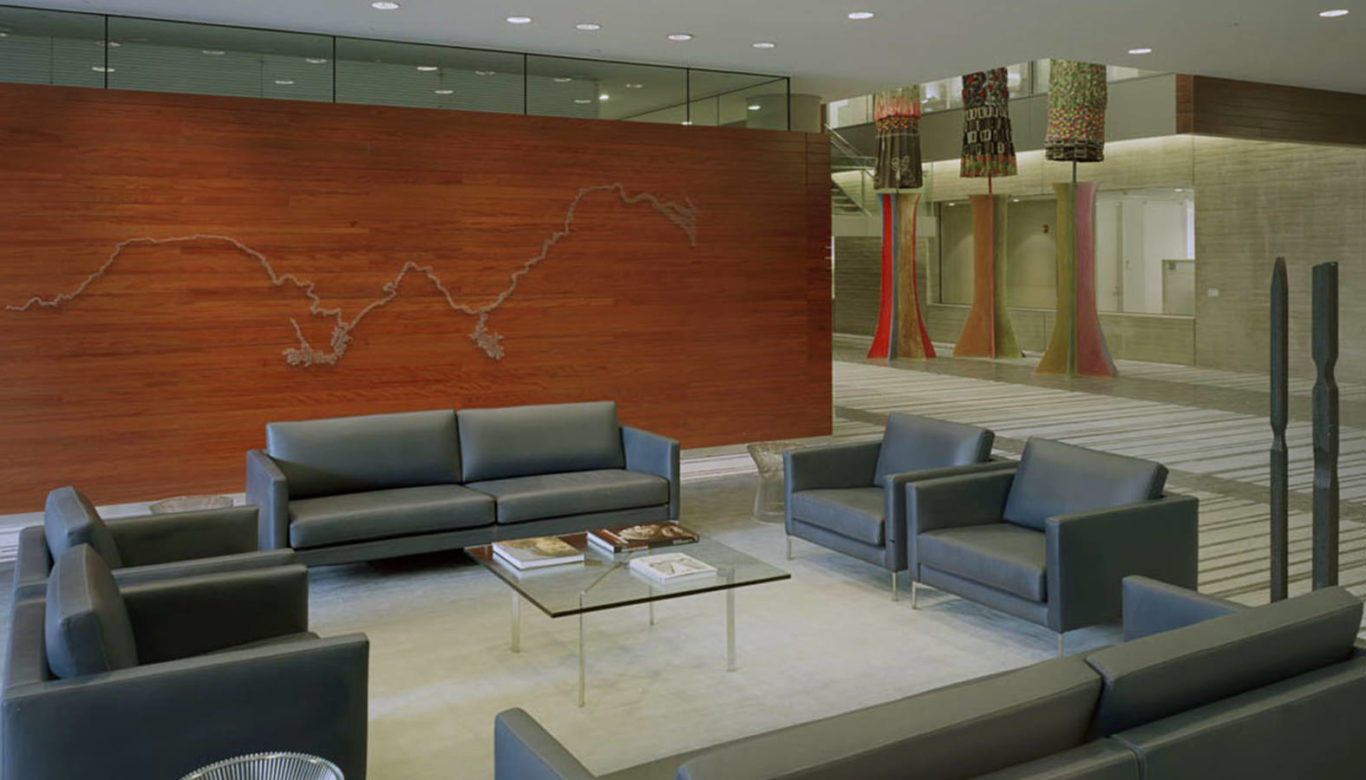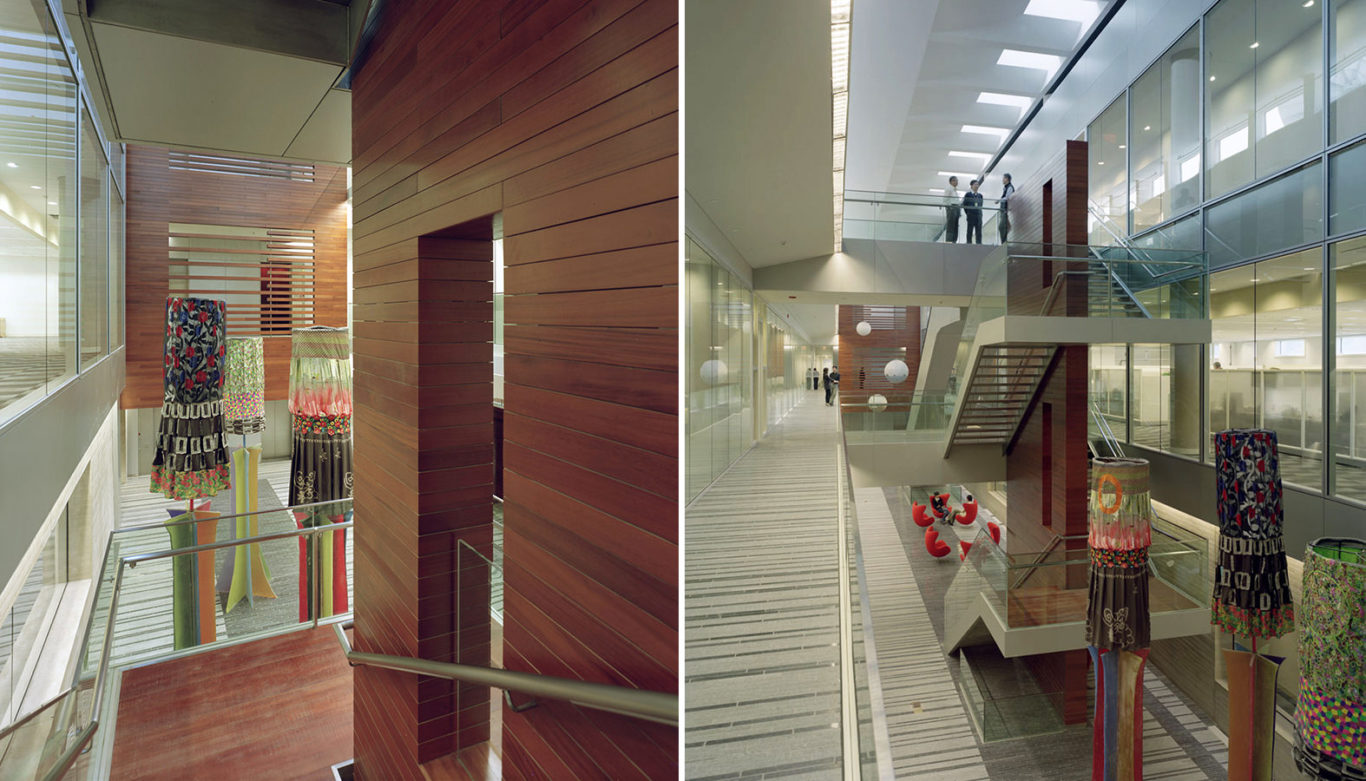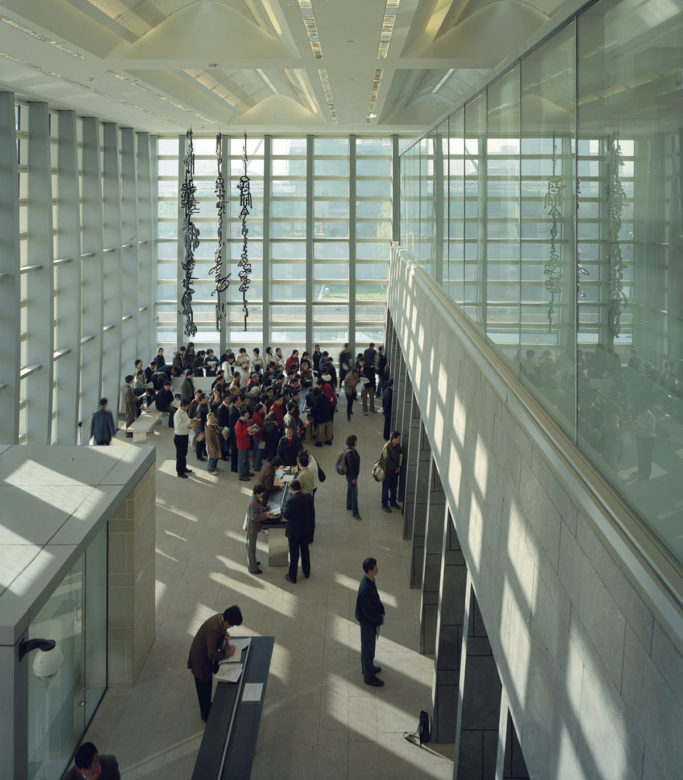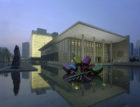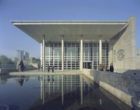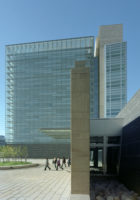Housing more than 20 agencies and 700 employees, the U.S. Embassy complex in Beijing is the second-largest embassy compound ever built by the federal government. To mitigate its scale and to create a welcoming aesthetic, SOM divided the complex into “neighborhoods” based on functional requirements.
Eight buildings make up the 4-hectare site, including a consular services building, marine barracks, and perimeter inspection stations. The centerpiece of the complex is a gleaming, eight-story glass box whose curtain wall shifts between transparent, translucent, and opaque glass panels. At night, the illuminated office building calls to mind a traditional paper lantern.
The embassy’s design represents a fusion of Eastern and Western influences. Walkways wind through the grounds, while courtyards and pockets of green space evoke historic Chinese gardens. The visual arts also influenced the site’s design: In addition to donated works by Ellsworth Kelly and Louise Bourgeois, the noted sculptor Jeff Koons was commissioned to create the site-specific piece, Tulips, for the complex.
